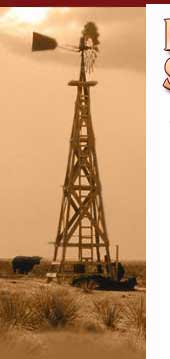|
The economic benefits and potential when using current and future EPDs - Economic Relative Traits
Mark Enns, Geneticist, CSU

Mark Enns, geneticist at Colorado State University, said producers should focus on what affects their profitability and the economic traits of the cow herd when making selection decisions. He said the future of expected progeny differences is the development of economic trait indexes.
|
Since the late 1970s, the industry has moved from five expected progeny differences (EPDs) to many breeds having more than 15. "There’s no way to really combine all those EPDs to make a good bull selection decision or choose the right replacement heifers that are going to increase the profitability of your breeding program or increase the profitability of your calves in the feedlot," Colorado State University (CSU) geneticist Mark Enns told attendees of the 2003 Range Beef Cow Symposium.
The assumption has been that the more EPDs we have, the better we can characterize individuals. The problem, Enns said, has been the proliferation of EPDs for indicator traits that don’t relate to economic goals. While indicator traits do help characterize animals, economically relevant traits (ERTs) directly influence either a cost of production or an income associated with production of a commercial operation.
As an example, Enns cited birth weight as an indicator trait, while calves born unassisted is the ERT that affects a producer’s bottom line.
To make sense of the EPDs available today, Enns said producers have three options.
1) Stay with the status quo. This option relies on producers weighting traits according to their own perceived values as they attend a sale, for example. While it is the easiest option, Enns told producers it is the least accurate.
2) Develop a selection index. Enns summarized a couple selection indexes that have been used successfully to make simultaneous directional change in multiple — and even antagonistic — traits. This option requires a detailed knowledge of costs of production and sources of income and may require the help of a consultant.
3) Focus selection on ERTs. This option varies in complexity from just narrowing the number of EPDs one considers to developing value-based indexes based on ERTs, which again requires a knowledge of costs, income sources and enterprise levels.
"There are ways we can combine economics and we can combine traits into values to help us improve those traits that directly influence our profitability simultaneously," Enns said.
As part of the National Beef Cattle Evaluation Consortium (NBCEC), CSU has released a prototype of a maintenance feed requirement EPD that is available to all breed associations. Also in the works are a days-to-finish EPD and a stayability EPD.
— by Shauna Rose Hermel
Click here to download the presentation (in pdf format).
You will need Acrobat Reader to view
 Click the image to download a free copy.
Click the image to download a free copy.
Click here to listen to the presentation
You will need Windows Media Player to listen in.
Click here to download a free version.
|
